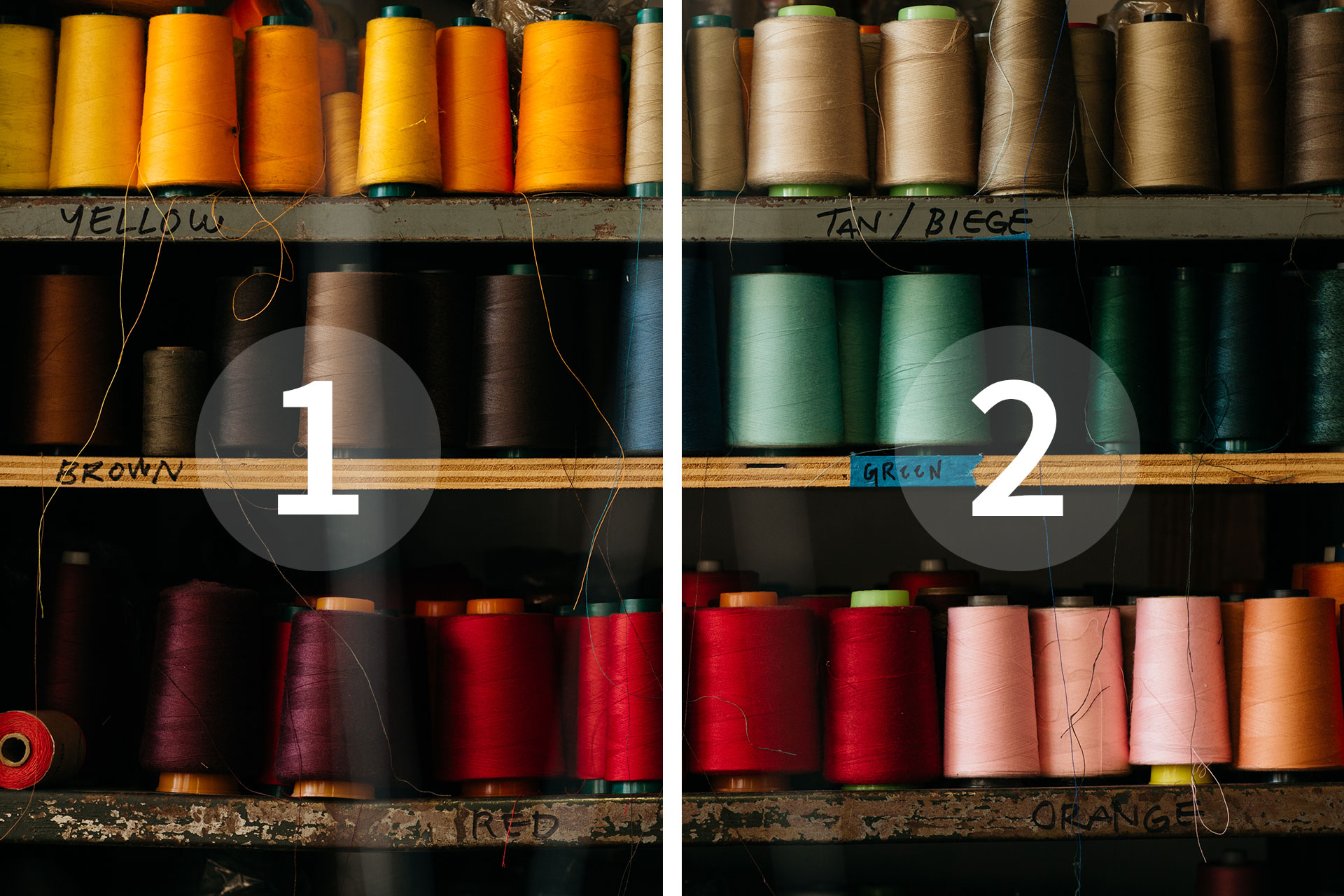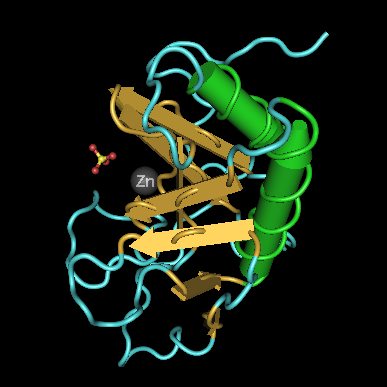


A Silent Killer in the Air

A Silent Killer in the Air
A Silent Killer in the Air



Do you know that indoor air pollution is among the world’s top five environmental health risks?
Estimates from the World Health Organization (WHO) and others suggest that between 30 and 150 times more people are killed due to indoor air pollution than global warming.
Premature death due to household air pollution


Percentage of premature deaths by pneumonia among children under 5 caused by house air pollution.
Annual premature deaths from non-communicable diseases
According to WHO:
- Over 4 million people die prematurely from illness attributable to the household air pollution from cooking with solid fuels
- More than 50% of premature deaths due to pneumonia among children under 5 are caused by the particulate matter inhaled from household air pollution.
- 3.8 million premature deaths annually from non-communicable diseases including stroke, ischaemic heart disease, chronic obstructive pulmonary disease (COPD) and lung cancer are attributed to exposure to household air pollution.
In its March 2014 report, WHO estimated that about 7 million people worldwide died as a result of air pollution exposure in 2012 alone. South-East Asia and the Western Pacific areas are the regions in which health is most affected by air pollution, with approximately 3.3 million deaths linked to indoor air pollution and 2.6 million to outdoor air pollution – scarily more deaths from polluted air indoors than outdoors!
It may come to a surprise to you that the concentrations of many pollutants indoors exceed those outdoors. Studies by the United States Environmental Protection Agency (EPA) found levels of about a dozen common organic pollutants to be 2 to 5 times higher inside homes than outside, regardless of whether the homes were located in rural or highly industrial areas.
Concentrations of many contain volatile organic compounds (VOCs) are also consistently higher indoors than outdoors. An EPA study covering six communities in various parts of the US found indoor VOC levels up to 10 times higher than those outdoors, even in locations with significant outdoor air pollution sources, such as petrochemical plants.
Where does all the air pollution come from?
Pollutants that can affect air quality in a home fall into the two broad categories:
- Particulate matter includes dust, smoke, pollen, animal dander (skin flakes from an animal’s hair or fur), tobacco smoke, particles generated from combustion appliances such as cooking stoves, and particles associated with microorganisms such as dust mites, moulds, bacteria, and viruses.
- Gaseous pollutants come from combustion processes. Sources include gas cooking stoves, vehicle exhaust, and tobacco smoke. They also come from building materials, furnishings, and the use of products such as adhesives, paints, varnishes, cleaning products, and pesticides.
Ironically, the seemingly cleanest homes or offices may actually have the worst air quality due to the fastidious use of cleaning products and air fresheners that release harmful VOCs. Synthetic fragrances are the biggest culprits.




Various sources of harmful particulate matter


Research by a team from the University of Washington on 25 common fragranced consumer products —laundry products, personal care products, cleaning supplies and air fresheners, many of them top sellers in their categories— found 133 different VOCs emitted from the products, with an average of 17 VOCs per product. Of these 133 VOCs, 24 are classified as toxic or hazardous under US federal laws, and each product emitted at least one of these compounds. Among them are probable carcinogens (cancer causing) acetaldehydea, formaldehyde and methylene chloride.
Biological air pollutants are found to some degree in every home, school, and workplace. Sources include outdoor air; and human occupants who shed viruses and bacteria (e.g. influenza, measles, chicken pox); pets, dust mites and other pests (e.g. cockroaches) that shed allergens; toxins released by moulds and mildews; as well as indoor surfaces and water reservoirs where fungi and bacteria can grow.
Building dampness were determined to be associated with 30% to 50% increases in a variety of respiratory and asthma-related health outcomes. In Malaysia, where the average relative humidity is way above 80%, we have to take extra precautions to prevent these biological contaminants from spreading.
Environmental tobacco smoke (ETS), also known as secondhand smoke, is another major source of indoor air pollution.






WHO estimates that tobacco kills around 6 million people each year — more than 5 million due to direct tobacco use and more than 600,000 are the result of non-smokers being exposed to ETS. ETS a dynamic complex mixture of more than 7,000 chemicals found in both vapour and particle phases, more than 70 of which are known to cause cancer in humans or animals, and many of which are strong irritants.
Despite the ban on indoor smoking in public places, we still see smoking in some worksites, many restaurants and other “hangout” places such as pubs and karaoke joints. Alas, you can ban smoking in your home and still be exposed to ETS. According to the US Centers for Disease Control and Prevention (CDC), there is no risk-free level of ETS exposure; even brief exposure can be harmful to health.
Just because the room seems well ventilated with hardly any smoky smell does not mean ETS is not silently killing you anyway. Research has led to the conclusion that total removal of ETS through general ventilation is not feasible.
In fact, one should not rely on odour to determine what is good or safe. Some things that smell, like vinegar, are harmless. Some odourless things—like radon and carbon monoxide— are very harmful. Sometimes, chemicals can cause you to feel sick before you notice any odour. Some people also experience “olfactory fatigue,” which is a deadening of the sense of smell. This can happen soon after the first odour sensation occurs, especially if it is a very strong odour.


Blueair Aware
Be Aware of Indoor Air
Bad indoor air quality kills. The new Blueair Aware is an air monitoring device designed to quickly detect hundreds of different types of airborne particles in your indoor environment, including everything from fine particulate matter (PM2.5) to VOCs. It also tracks room humidity and temperature. Monitor your indoor air quality in real-time, track the data, and get alerts on your smartphone with the Blueair Friend App.

Can Malaysian government block Pokémon GO if they wanted to?
Can Malaysian government block Pokémon GO if they want to?
by Eshwaren M – 08/08/16


Pokemon Go is finally available in Malaysia, almost one month after the launch. Recent news reported that a Malaysian server is set to run soon, giving hope to the anticipating crowd. However, there are already multiple conservative efforts to make sure the long awaited mobile game will not be playable in Malaysia, ever.
I will try to keep this elementary without much technical jargons. Mobile applications are made by developers for different platforms. The two largest mobile platforms are Android and iOS. Once the app is ready to be consumed by users, developers will then upload it to online markets based on their platforms, in this case, Google Play for Android and App Store for iOS.
Google Play & App Store Blocks
Both of these app markets are regional, which means you will receive different contents based on where you are. This is generally determined by the developers themselves due to technical issues like server configurations (the reason for Pokemon Go’s delay in Malaysia) or payment methods, and localization issues like languages and targeted users. Apps like these will not appear in Google Play or App Store.
For both platforms, you may overcome this by changing the regional settings on your Google Play or App Store account. Setting everything to “United States” unblocks most apps, and still in English. Even now in Malaysia, you can download Pokemon Go using this method. For Android users, you may also simply download a copy of an APK file, and install on your device, making sure the file was downloaded from a trusted source and not contain malicious scripts that may harm your device.
ISP & Telco Blocks
The second blocking measure is through your Internet Service Provider (ISP). ISP’s can track which app is using its network, and terminate the particular connection. You may launch the app but not get any internet connection for it. This is the same way how your telco may give free streaming or mobile data for certain apps.
Again, VPN comes to the rescue, and may alter the way data is transferred to your ISP. However, not all ISPs will block the app at the same time. A recent ban of Whatsapp in Brazil, was only for mobile ISP’s, and home connections were fine. Therefore, using a different ISP’s might help to overcome the block.


Regional blocked apps on Google Play.
It is quite common for websites to be blocked these days. The Malaysian Communications and Multimedia Commissions have blocked hundreds of websites mostly ranging from adult to torrent sites. Website blocking is not a big issue since there are so many ways you can still gain access to these sites, using counter services like Virtual Private Network (VPN) and a different Domain Name Service (DNS). However mobile applications blocking is more complicated.


Changing DNS gets rid of these kind of blocks.
Conclusion
VPN’s are now much easier to implement, but definitely requires some technical knowledge. Using such proxy without any information or troubleshooting information may cause more harm to your security and privacy. For Apple users, it gets worse. You don’t get Android’s power user options like rooting or installing APK files. Changing regional settings on your App Store is a painstaking process. Players might need to run a GPS hack if there are no Malaysian servers to simulate maps from other countries.
In conclusion, the ban is possible. It will atleast make the game not playable. Players will not experience the augmented reality and social parts of the game.

There is a little bit of Pikachu inside all of us
There is a little bit of Pikachu inside all of us
There is a little bit of Pikachu inside all of us
Unless you paid attention in your secondary school biology class or have an extreme interest in biology, it’s quite unlikely that you’d be familiar with the names of most biological molecules. Scientists usually name things after their structures or functions so you end up with a bunch of very confusing and mundane ones, like the Beta-2 microglobulin or the major histocompatibility complex (MHC).
But every once in awhile, scientists show that they are, in fact, up to date with popular culture and decide to add a little creativity to the nomenclature.
Pikachurin is found in our eyes and is essential for the transmission of electrical impulses to the brain’s vision centre. It also helps our eyes track moving objects.
Because of the way scientists study different kinds of proteins, we don’t actually know what Pikachurin’s function is, only that it is important and that without it, transmission of information to the brain would get disrupted. The study was carried out on mice, with scientists removing the gene involved in making the protein, so that they could see what it is that happens when an animal lacks Pikachurin. It was discovered that, without the protein, it would take nearly four times as long for signals to reach the brain, resulting in incorrect movement of other elements in the eye, eventually leading to a form of muscular dystrophy.
In 2003, a group of researchers at the Memorial Sloan-Kettering Cancer Center in New York discovered a gene they decided to call the POK erythroid myeloid ontogenic gene (or Pokemon, for short).
Pikachurin isn’t actually needed for us to see per say, but it sure plays a big part in helping us. Our eyes have photoreceptors, which are specialised cells, that move around the eye to take in light. These photoreceptors then send information, in the form of electrical impulses, to an important structure called a synapse. Synapses are structures found all around the body that play a big part in transmitting information to the brain through the central nervous system. When photoreceptors send information to a synapse, a few different processes begin to take place, which eventually results in the necessary information being sent to the brain to be translated into visuals we can see. The processes that occur at these synapses involve a lot of different types of minerals and proteins, one of these proteins being Pikachurin.


This isn’t the first time scientists used the Japanese franchise as inspiration. In 2003, a group of researchers at the Memorial Sloan-Kettering Cancer Center in New York discovered a gene they decided to call the POK erythroid myeloid ontogenic gene (or Pokemon, for short).
It was later found, however, that the gene was able to cause cancer. The gene was prone to undergoing harmful mutations that would lead to cells growing uncontrollably and eventually becoming cancerous. In fact, it was suggested that the gene was actually needed for other cancer-causing genes to mutate and so acted as a master switch for cancer. It was no surprise then that in the following days, a rush of headlines such as “Pokemon causes Cancer!” began to surface. Nintendo, not wanting the brand to be associated with the disease, threatened legal action against the research centre if they didn’t change the name. The researchers were then forced to switch it to the much less controversial, Zbtb7.
However, there are many other genes that have been named after fictional characters. Sonic Hedgehog is a gene found in mammals that plays a part in the development of the central nervous system in an embryo. It was named so because when the gene was deleted in a species of flies, scientists thought the fly’s embryo looked like a hedgehog. Another fun fact is that the drug that is used to inhibit the gene is called robotinikinin, a reference to the main antagonist of the Sonic the Hedgehog games, Dr. Ivo Robotnik. Another gene, found in zebrafish, is called Dracula and is, of course, associated with blood disorders. There’s even a Ken and Barbie gene, which is found in fruit flies and plays a role in sexual organ development.
Thanks, Pikachu. Seeing wouldn’t be the same without you.

Make a smart move by savings for future higher education with takaful protection
Bit by bit, saving small amounts today really makes a long-term difference in the future when comes the moment of truth. The philosophy is simple and practical. Make it a natural habit and you will end up saving a lot of money in the end. The emergence of many innovative saving instruments in this modern era makes saving money a more rewarding experience, regardless of when and how much you start off with. What you need is a systematic and effective financial planning. Prepare yourself into the future by investing your savings in a smart financial product that safeguards your future higher education fund and provides takaful protection at the same time. Your thoughtful planning assures the pleasure and comfort of the future that you deserve. So, start saving now!


Foster saving habit through smart financial planning
Arm yourself with a focused diligence to plan for your higher education fund in a smart way to earn you a more assured future. The introduction of Skim Simpanan Pendidikan Nasional (SSPN-i Plus) by Perbadanan Tabung Pendidikan Tinggi Nasional (PTPTN – or The National Higher Education Fund Corporation) is a brilliant way to start with, simply because it yields dynamic long-term cash returns plus takaful (syariah compliant) protection as a bonus. In other words, the product is all about a guaranteed higher education fund in the future plus the very important takaful coverage against unwanted eventualities. Thanks to the partnership between PTPTN and Hong Leong MSIG Takaful, this innovative product is now made affordable to all walks of life who truly care about the future of their higher education. On a noble note, the product aims to inculcate a disciplined saving habit among Malaysians. Just as the Malay saying goes, prepare the umbrella before it rains. What you save today grants you the much-needed confidence to march into the future. Although the future is full of endless uncertainties, your smart move today holds the key to peace of mind in the future.


SSPN-i Plus – Unique and special plus it’s guaranteed by government
The very special aspect of SSPN-i Plus lies in its uniqueness. It combines the benefits of saving alongside takaful protection in one simple and easy, yet powerful package! It is a financial planning product that better reflects the realities of today and the future, taking into consideration of the ever rising living costs, including education costs. For the ultimate peace of mind, the product is fully guaranteed by our government. This simply translates into a smart financial planning that allows you to finance your future education costs right from this moment on! It is clever and secure. With SSPN-i Plus, you take charge of your personal finance through a dedicated, purpose-built saving instrument that helps reduce the financial burden on your parents. Again, the key to securing the future of your higher education with added peace of mind is to prepare well in advance through a smart financial planning.
Saving as early as possible to avoid financial bottleneck in the future
On a noble note, the launch of SSPN-i Plus aims to instil the saving habit among our people. It aspires to transform the mindset of our society to embrace saving from as early as possible. The newly launched SSPN-i Plus draws inspiration from the highly successful Skim Simpanan Pendidikan Nasional (SSPN-i) introduced 12 years ago. SSPN-i Plus made its debut on 8 June 2015 and has since captured the hearts of many depositors for its capability of combining savings and takaful protection into one dynamic and comprehensive package at affordable prices. It is specifically designed to safeguard your higher education future without relying purely on education loan. In a nutshell, SSPN-i Plus enriches the minds of the younger generation with a practical financial planning of foreseeable results. After all, your long-term savings come in really handy when it matters most at the critical moment. SSPN-i Plus helps you avoid the embarrassing situation of having to deal with a financial emergency in the future.
its capability of combining savings and takaful protection into one dynamic and comprehensive package at affordable prices


The Wow! SSPN-i Plus Draw
For 2016/ 2017, PTPTN is stepping up its effort to champion the saving habit among Malaysians by spicing up the rewards system through the Wow! SSPN-i Plus Draw. This laudable initiative aims to foster saving culture among parents who are preparing their children for higher education. SSPN-i Plus is an ideal financial product for the younger generation aspiring to excel at higher education levels with added peace of mind as their education costs are technically taken care of. In other words, the innovative product will realise its full potential as depositors begin their higher education. Again, SSPN-i Plus is possibly one of your best choices to avoid a critical financial pitfall in the future.


Amazing prizes up for grabs in Quarterly and Annual Draws
The Wow! SSPN-i Plus Draw is now open to all interested individuals, offering RM1.5 million worth of fantastic prizes. Over 300 amazing prizes await the lucky depositors of SSPN-i Plus who open a new account or increase their deposits between 1 July 2016 and 30 June 2017. The Wow! SSPN-i Plus Draw consists of the Quarterly Draw (3 draws featuring a grand prize of a unit of Honda Jazz and 20 consolation prizes of RM2,000 each) and the Annual Draw (grand prize: 1 unit of Proton Perdana; second prize: 3 units of Toyota Vios; third prize: 5 units of Kawasaki motorcycles; and 250 consolation prizes: RM2,000 each). Overall, the Wow! SSPN-i Plus Draw promises greater rewards in a more enticing scheme.


Easy and convenient transactions via Ejen Online PTPTN
In line with the popularity of the internet where information and communication technology dominates the digital age, PTPTN has also introduced a very convenient channel to market SSPN-i Plus through Ejen Online PTPTN. The online marketing programme intends to facilitate certain transactions, including account opening, at the touch of a button anywhere and anytime without a visit to the PTPTN counters.
Great rewards await Ejen Online PTPTN
PTPTN has also introduced a special programme for its Ejen Online PTPTN. Rakan Niaga Affiliate and Ejen Pemasaran Online are entitled to a commission of 15% and 25% respectively under this programme. The scheme also allows Ejen Online PTPTN to begin their career with PTPTN without any capital investment. Furthermore, they get to enjoy flexible working hours along with regular training and guidance from PTPTN. The good news is that all of them do not involve any cash transactions. Other incentives include Anugerah Ejen Online PTPTN Terbaik for the top achievers who hit the marketing targets, together with international holiday packages and cash rewards up to RM4,000.



